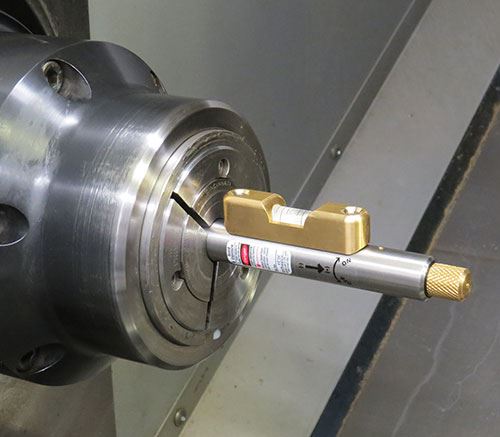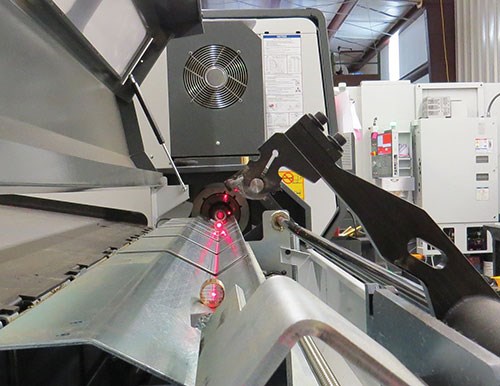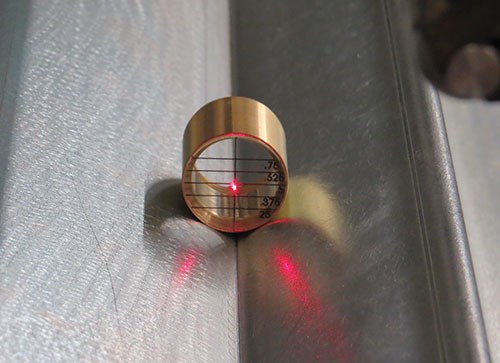Is Your Bar Feeder Accurately Aligned?
This affordable, simple system enables shops to quickly and accurately check bar-feeder alignment on their own.
Share



It’s important that a lathe and its bar feeder are accurately aligned. However, a poor facility foundation, vibration during production and accidental bumping of the bar feeder can cause misalignment between the units. This can result in premature wearing of the bar feeder’s liner or collet and more frequent production stops for bar feeder maintenance.
Nicolas Mayerhoeffer, marketing director of Laser Tools Company (Little Rock, Arkansas), says nearly 50 percent of all bar-feeder breakdowns occur due to misalignment. Mr. Mayerhoeffer suggests that shops should check bar-feeder alignment once per month and, of course, each time a barfeeder is inadvertently nudged out of position.
That said, he notes that conventional alignment methods, such as using tight wire or line or even simply eyeballing, are often time-consuming and inaccurate. Plus, high-end laser alignment systems can be costly and typically require a significant amount of training. These challenges spurred Laser Tools to develop an affordable, simple system to enable shops to quickly and accurately check bar-feeder alignment on their own. The company’s L56SS Bar Feeder Alignment System uses a laser that is chucked within a lathe’s spindle and shoots its beam back through the spindle bore and bar feeder. Two clear targets with measurement grids register the left/right and up/down positions of the front and back of the bar feeder so users can align both ends at the same time.
Mr. Mayerhoeffer says system setup takes approximately five minutes. The 0.75-inch-diameter laser installs within an appropriately sized lathe collet or chuck. (The laser’s body is made of stainless steel to resist deformation due to chuck clamping pressure.) For larger machines, a 1-inch adapter sleeve must be used. One clear target is positioned within the bar feeder’s liner or on the bar feeder’s tray close to lathe’s spindle. Another target is positioned on the bar feeder’s tray farther away from the spindle. Both targets are oriented so their center graduation lines are vertical. The points where the laser beam passes through each target indicate the bar feeder’s alignment with respect to the lathe’s spindle bore. Personnel can then adjust the bar feeder’s front and/or back position to bring the dots to the proper spots on each target.
The laser is powered by AAA batteries. Beam straightness of ±0.010 inch over 10 feet enables the system to be used with a variety of bar feeder sizes.
Related Content
-
Understanding New Surface and Profile Standards
Standards for surface finishes and profiles are not static; they change as technology changes or new processes come along that need to be considered.
-
Ballbar Testing Benefits Low-Volume Manufacturing
Thanks to ballbar testing with a Renishaw QC20-W, the Autodesk Technology Centers now have more confidence in their machine tools.
-
Machined Part Geometry Measurement
Uncertain about uncertainty? Having trouble remembering the difference between accuracy and precision? Read on to review key metrology terms relevant to the ISO Guide to the Expression of Uncertainty in Measurement (ISO GUM).

























